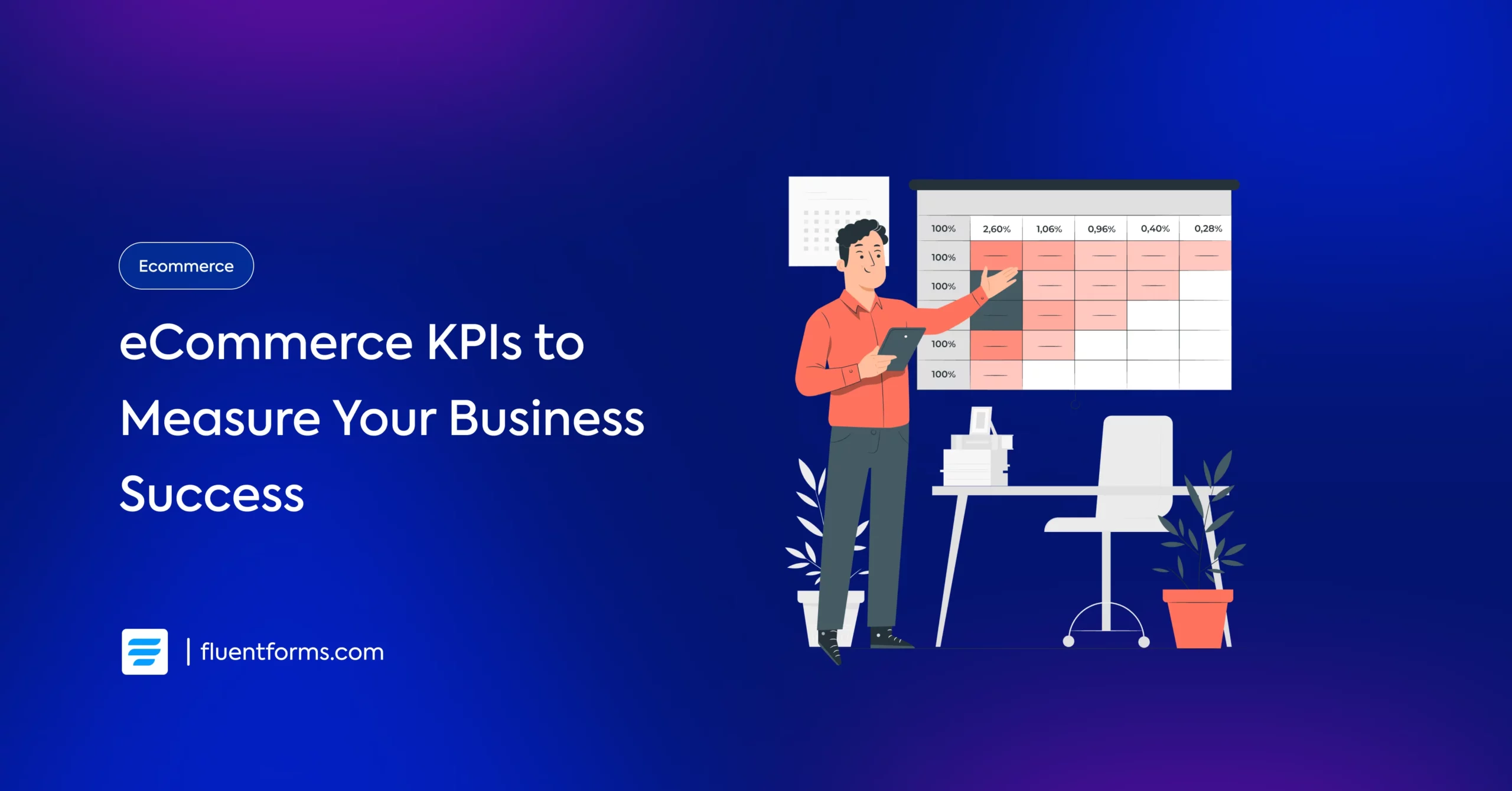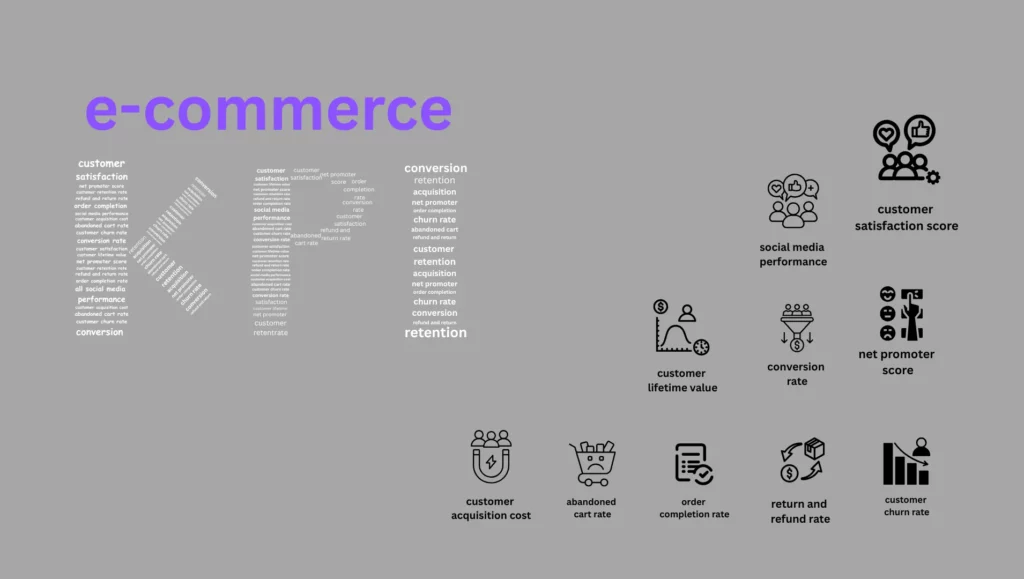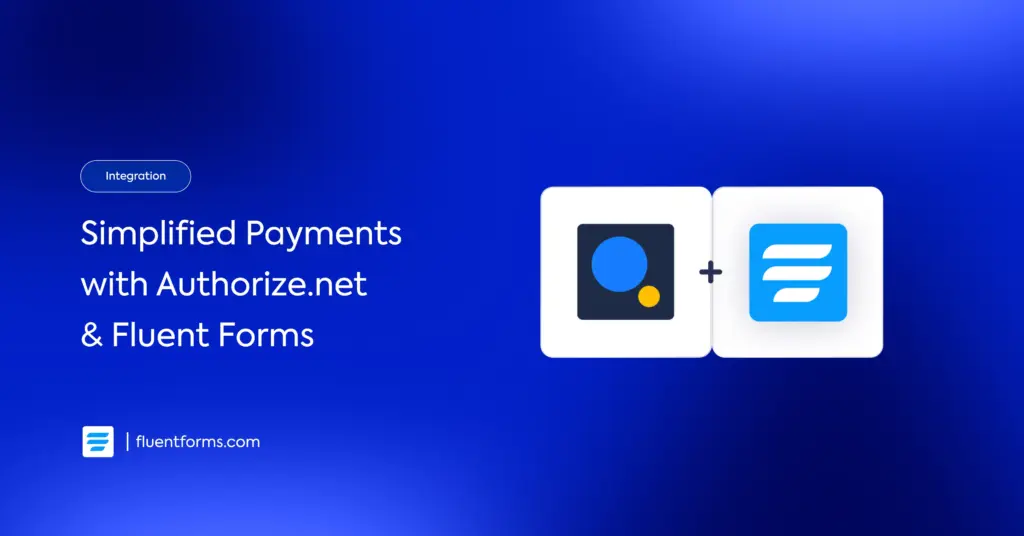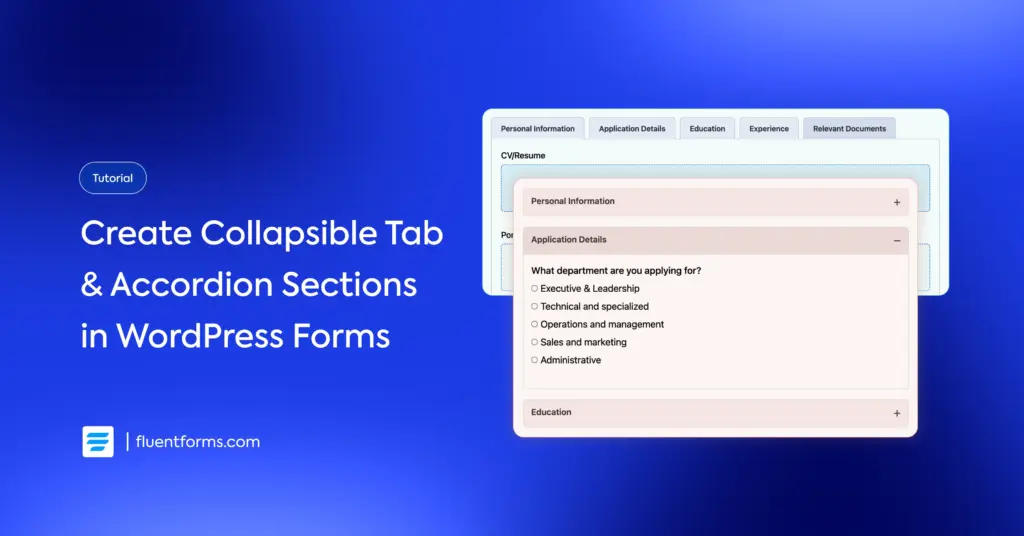11 eCommerce KPIs to Track Your Online Business Performance

You need to define a reference point to measure the performance of your online store. That’s called the eCommerce KPI: key performance indicators.
eCommerce KPIs, if analyzed properly, can be the solution for overcoming the performance barrier and mark down when, where, and why it works smoothly.
This blog is designed with insights about eCommerce KPI to help you use them accordingly.
What are eCommerce KPIs
eCommerce KPIs, or key performance indicators, are the defined metrics that represent the position of an online business considering particular targets.
For example, if generating revenue is the primary target of an e-commerce business, then the revenue growth rate will be the most important key performance indicator.
Why should you track KPIs and metrics of your online business
Maybe the business you run has quite noticeable performance. Still, to keep up the pace and ensure growth keeps flourishing, you must evaluate where you are and pave the path for tomorrow.
Why change the whole process if a particular section is not working properly?
If you can calculate the outcomes of every section, you can easily assess the value and make impactful changes. This will, on one side, improve the performance of a falling sector, and on the other side, relieve you from extra efforts.
Let’s define the point-specific metrics to help your online business grow faster.
Evaluating the current position
Your eCommerce store is a full-fledged business, decorated with multiple departments performing diversified tasks. This is why calculating only the profit ratio or total revenue doesn’t show the overall growth of your business.
Keeping the right track of the metrics gives you a pinpoint idea of where to put more fuel.
Finding the flaws and solving them accordingly
Suppose your eCommerce website visitors are coming from different sources, spending time on your site, but ending up with an unfinished purchase. This shows there is a reason why the checkout process is not working. When this rate goes up, and you detect it before it goes upper, you can just run an A/B test or conduct a survey and take necessary steps.
Detecting scopes to invest or re-invest
It’s not always the effort or strategy that fails to bring results, sometimes it’s the lack of investment in the proper sector. To split your investment accordingly, you need to compare the KPIs first.
Top eCommerce KPIs to track in 2025
Knowing which KPI applies to which ground makes the metrics meaningful. You can’t blame your branding strategy for a decreased sales line if you don’t know how to measure the result.
Secondly, timing is the most relevant part of your metrics measurement. If you are running SEO operations and expecting significant results within half a calendar year, your expectation is too high to meet. Likewise, the engagement in a social media post should be measured at least within a couple of days. Later on, nobody is going to remember that.
Considering diverse factors, here you will get an overview of the top eCommerce key performance indicators for 2025, shaping your business strategies in a cutting-edge predictive analytics.

Customer acquisition cost (CAC)
Customer acquisition cost defines how much it costs your store to get a new visitor. If you are getting 10,000 visitors per month, costing $1,000, the CAC of your business is $0.2 per customer.
The lower the CAC is, the better you are performing in acquiring new customers.
Lowering the customer acquisition cost depends on a few aspects, including inbound marketing, omnichannel branding, targeted ads, etc.
Note that an acquired customer doesn’t guarantee a confirmed sale; a successful sale happens when a purchase is made, which means a conversion.
Conversion rate
A customer acquisition makes no results until a purchase. The main goal is to convert a customer from a visitor to a purchaser.
The conversion rate of your online business defines how many customers, on average, have made a purchase.
The combination of the checkout process, pricing, personalized shopping experience, and pricing strategies keeps the conversion rate high.
Customer lifetime value
Though customer lifetime value is measured by the total amount spent by a customer in a given time, it also increases the retention rate, customer loyalty, and advocacy. So, a customer lifetime value is a multidimensional aspect of earnings that develops a brand’s overall performance.
You can easily track it by calculating the average order value, number of repeat sales, and retention time.
Social media performance
Impression: the total number of content appears within a given period.
Reach: the total number of unique visits to the content.
Engagement: the total number of reactions, comments, and shares.
Along with that, you can keep track of follower count, follower growth, engagement growth, etc.
Customer churn rate (CRR)
Customer churn happens when your customers leave your site and don’t return. It’s the opposite of retention. A churn, from the customer’s perspective, is opting for the alternatives. And from the store’s point of view, it’s about losing an acquired customer.
The lower your churn rate is, the higher your customer retention performance is.
Customer churn rate directly involves customer lifetime value, average order value, and customer lifetime value.
Abandoned cart rate
An abandoned cart refers to an incomplete purchase when a customer completes all the purchasing procedure except placing an order. The cart abandonment rate shows how many added carts remain unsold till a given time.
If the abandoned cart rate is high, it’s needless to say that anything at the checkout process, including the pricing and user experience, or reviews, is found unpleasant by a customer, which makes one more abandoned cart. In that case, you should implement some timeless abandoned cart recovery strategies to retain the lost customers.
Order completion rate
A complete order means a customer who clicked on the checkout page has placed an order.
The order completion rate is the calculated percentage of checkouts that turn into purchases.
Customer retention rate
Customer retention rate is the calculation of the number of customers who have returned to your store after a successful purchase.
If you acquired 100 new customers in the last year, and 80 among them returned, you have an 80% customer retention rate. You can easily calculate the customer retention rate knowing the customers at the starting period, acquired during a given time, and the number of customers at the end.
Refund and return rate
eCommerce refund or return rate refers to the percentage of the total returned/refunded products of the total sold items.
Refund and return rate help you understand why people are upset with your product. You can find out the reasons behind the high return/refund rate.
- Incorrect sizing
- Mismatched products
- Internal or external damage
- Late delivery
Customer satisfaction score
Customer satisfaction score (CSAT), as a whole, is crucial for customer loyalty, retention, advocacy, getting reviews and ratings, and attracting new customers.
It’s a landscape of how satisfied your customers are with your products and brand. Suppose your brand’s CSAT score is 4.1 on a scale of 0 to 5, but 3.8 on product delivery, you need to look into the delivery issues.
Net promoter score
Net promoter score is a metric that equally concerns customer loyalty and satisfaction.
How to calculate the net promoter score?
Generally, it’s a scale of 0 to 10 for each customer, which is collectively measured in a wide range of -100 to 100.
It defines how your audience is likely to promote or advocate your brand to their friends or colleagues.
Promoters: score– 9 to 10: satisfied, loyal, and enthusiastic with your brand.
Passives: score– 7 to 8: they are satisfied but not yet loyal; competitors can win them with greater offers.
Detractors: score– 0 to 6: they are dissatisfied and possess a negative idea about your brand; it’s nearly impossible to win them back for further purchases.
To bring precision to your NPS calculation, you can run a survey using an NPS survey form.
How to track the most important eCommerce KPIs
It’s your data collection method that takes you the next step, counting the KPIs. You can store, analyze, and calculate the useful data to measure the KPIs effectively.
Google analytics
Google Analytics is an all-in-one tool for measuring these basic focal points:
- Click-through rate
- Page views and conversion rate
- Session spent by customers
- The highest and the lowest-selling products
- Changes and trends in transactions
Evaluating this, you can calculate the KPIs.
KPI Calculators
When you know the number, it’s easier for you to calculate the KPIs of your eCommerce business. All you need to do is collect and input data into KPI calculators accordingly.
AI and automation
AI is evolving like never before, so it’s a great opportunity to adapt your business operations to AI and automation. You can connect AI to your lead generation spreadsheet of sales, and other folders. Then you can easily automate your data with AI for further updates and calculations.
Moving forward
Tracking the KPIs for your online store is the primary process to achieve efficiency and steady growth. KPI’s help you understand where your business stands and what it’s lacking.
You can take informed decisions based on KPIs to increase sales, reach new customers, or expand to new demographics.
Your KPIs will not always follow a parallel parameter. It might depend on the industry standard or your position the last time you checked.







Leave a Reply